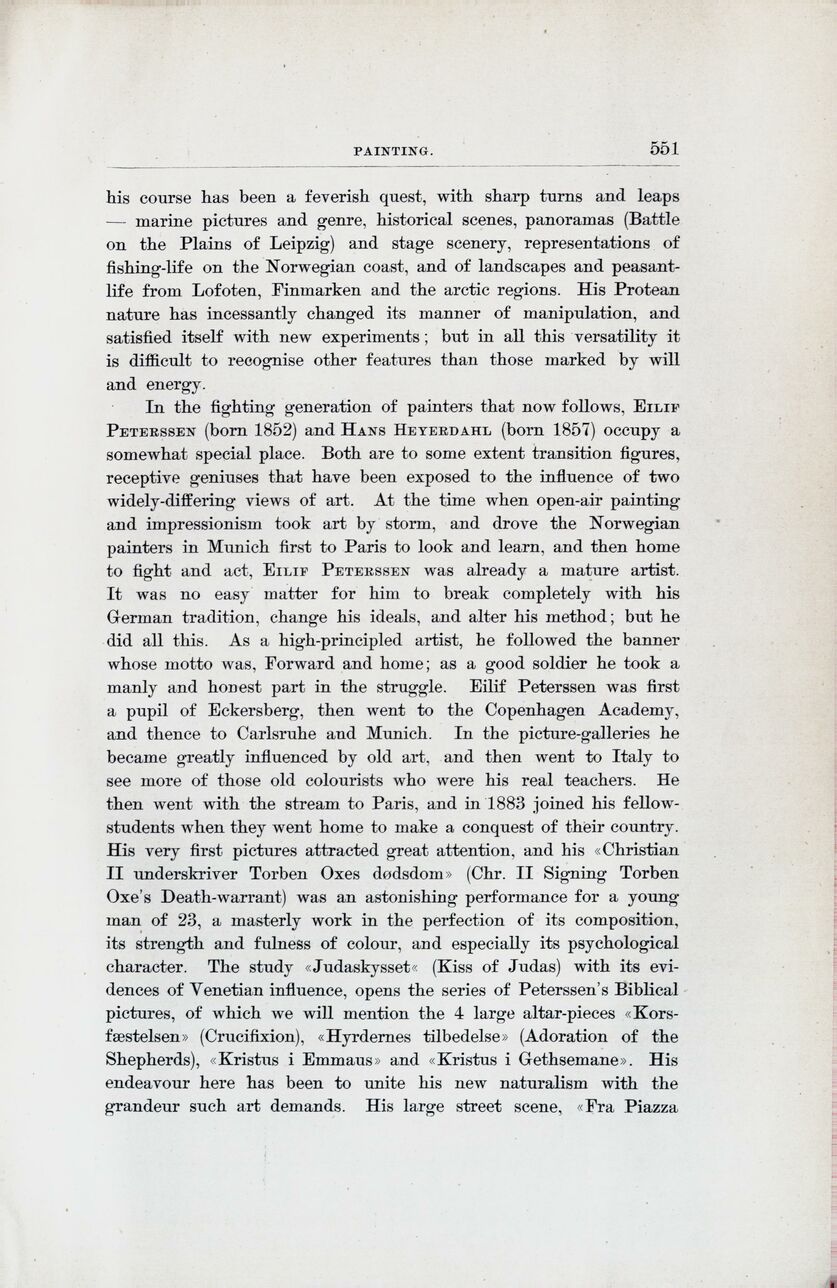
Full resolution (JPEG) - On this page / på denna sida - Painting, by Jens Thiis

<< prev. page << föreg. sida << >> nästa sida >> next page >>
Below is the raw OCR text
from the above scanned image.
Do you see an error? Proofread the page now!
Här nedan syns maskintolkade texten från faksimilbilden ovan.
Ser du något fel? Korrekturläs sidan nu!
This page has been proofread at least once.
(diff)
(history)
Denna sida har korrekturlästs minst en gång.
(skillnad)
(historik)
his course has been a feverish quest, with sharp turns and leaps
- marine pictures and genre, historical scenes, panoramas (Battle
on the Plains of Leipzig) and stage scenery, representations of
fishing-life on the Norwegian coast, and of landscapes and
peasant-life from Lofoten, Finmarken and the arctic regions. His Protean
nature has incessantly changed its manner of manipulation, and
satisfied itself with new experiments; but in all this versatility it
is difficult to recognise other features than those marked by will
and energy.
In the fighting generation of painters that now follows, Eilif
Peterssen (born 1852) and Hans Heyerdahl (born 1857) occupy a
somewhat special place. Both are to some extent transition figures,
receptive geniuses that have been exposed to the influence of two
widely-differing views of art. At the time when open-air painting
and impressionism took art by storm, and drove the Norwegian
painters in Munich first to Paris to look and learn, and then home
to fight and act, Eilif Peterssen was already a mature artist.
It was no easy matter for him to break completely with his
German tradition, change his ideals, and alter his method; but he
did all this. As a high-principled artist, he followed the banner
whose motto was, Forward and home; as a good soldier he took a
manly and honest part in the struggle. Eilif Peterssen was first
a pupil of Eckersberg, then went to the Copenhagen Academy,
and thence to Carlsruhe and Munich. In the picture-galleries he
became greatly influenced by old art, and then went to Italy to
see more of those old colourists who were his real teachers. He
then went with the stream to Paris, and in 1883 joined his
fellow-students when they went home to make a conquest of their country.
His very first pictures attracted great attention, and his «Christian
II underskriver Torben Oxes dødsdom (Chr. II Signing Torben
Oxe’s Death-warrant) was an astonishing performance for a young
man of 23, a masterly work in the perfection of its composition,
its strength and fulness of colour, and especially its psychological
character. The study «Judaskysset» (Kiss of Judas) with its
evidences of Venetian influence, opens the series of Peterssen’s Biblical
pictures, of which we will mention the 4 large altar-pieces
«Korsfæstelsen» (Crucifixion), «Hyrdernes tilbedelse» (Adoration of the
Shepherds), «Kristus i Emmaus» and «Kristus i Gethsemane». His
endeavour here has been to unite his new naturalism with the
grandeur such art demands. His large street scene, «Fra Piazza
<< prev. page << föreg. sida << >> nästa sida >> next page >>